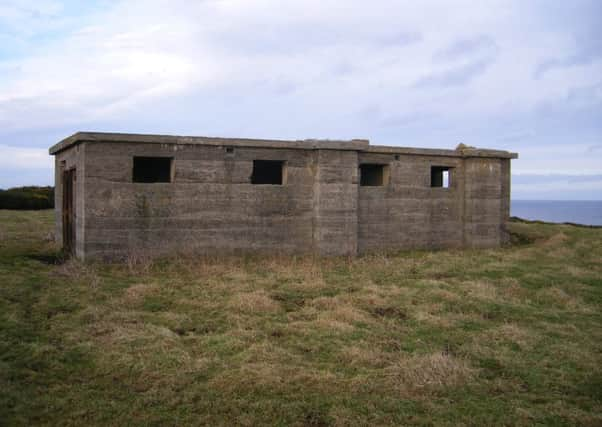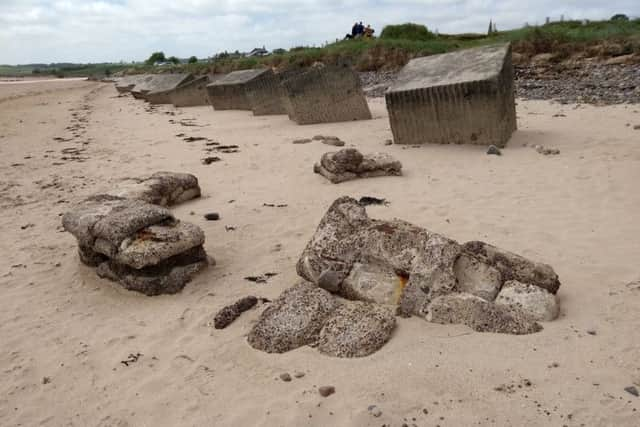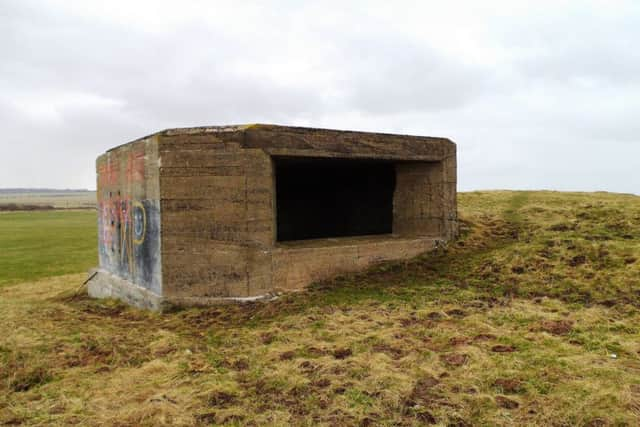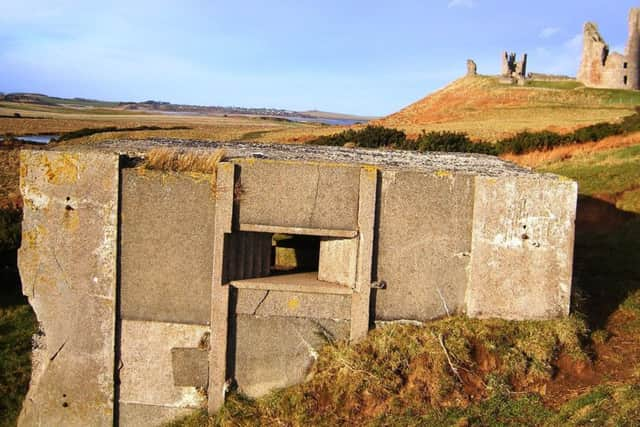Coastal sea defences in sands of time


The storms that batter our coastline regularly move the sands to reveal aspects of the past. We have seen prehistoric forest appear, as well as human artefacts. From our more recent history, the wartime concrete blocks have always been prominent here, as they are on many other beaches in the county, but so many more have now been uncovered.
Where they were previously buried in the sand, they now stand on the beach. It is a reminder how, not so many years ago, our coastline was on the front line, facing a continent occupied by a malevolent and aggressive power, intent on adding Britain to its “thousand year empire”.


Advertisement
Hide AdAdvertisement
Hide AdSitting on one of the blocks, eating my sandwiches, I started to do a rough mental calculation. Spaced at roughly one block every three yards and in a double row, this equates to about 1,000 blocks for each mile of protected coastline. And a quick look at a map shows that there are about 25 miles of beach in Northumberland, from Berwick to Seaton Sluice. In all, there must have been about 25,000 blocks in Northumberland alone.
In May 1940, Britain stood alone against the might of Nazi Germany. By the end of May, the remnants of the British Expeditionary Force had been evacuated from the beaches and ports around Dunkirk and the country faced the real prospect of invasion.
No significant preparations had been made for this eventuality, but from June through the summer of 1940, one of the largest construction programmes ever conceived in Britain was undertaken. From Scotland round to Wales, the whole coast became a defended frontier. The concrete blocks were a major part of this, but as well, there were gun emplacements, pillboxes and barbed wire. Below the high tide line, scaffolding was erected in order to make landings difficult, and on the larger beaches, obstacles were created to make glider landings hazardous, which included parking old cars on the sand.
Today, remnants of these still appear from time to time, while on the sands to the North of Lindisfarne, hundreds of anti-glider poles can still be seen.


Advertisement
Hide AdAdvertisement
Hide AdAt Alnmouth, the recent sand movements have also revealed a machine gun emplacement, built from concrete-filled sandbags. These were once a common feature of our coast, but time has not dealt with them very favourably. It is interesting, therefore, to see one emerge that, while not intact, is complete enough to give an impression of what it would have looked like.
Larger pillboxes are a common sight and on the hillside above the beach at Alnmouth is an interesting one built on top of an earlier gun site. This was built in 1881 for the Percy Artillery Volunteers. Thankfully, both versions were never used in anger.
In addition to these simpler defences, larger gun emplacements were built on the beaches, many of which were destroyed after the war. Some still remain, however, such as the ones at Cocklawburn, near Scremerston, and Newtown, on Budle Bay. Both of these have been cleaned and tidied as part of the recently completed Peregrini Lindisfarne Landscape Partnership project.
Of course, there were many more defences constructed inland, with hundreds of pillboxes in Northumberland alone, creating ‘stop lines’ and defences around our main towns. Anti-aircraft gun emplacements, radar stations and airfields all add to the concrete history of the county.


Advertisement
Hide AdAdvertisement
Hide AdAny walk down the Northumberland coast provides a visual lesson for one of the most important periods in the history of both Britain and of the world. If the Battle of Britain had not been won and the feared invasion had taken place, what would the future have been for Europe? With no need to maintain forces in the West, it is conceivable that the Nazi conquest of Russia would have been completed, and with Britain not available as an “unsinkable aircraft carrier”, the liberation of Europe from the West would have never happened.
All of this concrete will surely last for many years to come, but we can perhaps forget the story about why it was there in the first place.
The total amount of concrete used in the cubes on Northumberland’s beaches would have weighed about 100,000 tonnes – and that is without all the concrete for the other defences (apologies if any of my calculations have gone awry). That’s a serious bit of work, all completed over the summer of 1940.
This was a combined effort that must have involved so many Northumbrians. What were their stories? What were their thoughts while they were making this thin defensive line? Some of the blocks carry the initials of people who were presumably there when the concrete was wet. Who were they?
Is it not time that we started to see these coastal defences as significant relics from our past, as important, perhaps, as the many castles that are found in the county?